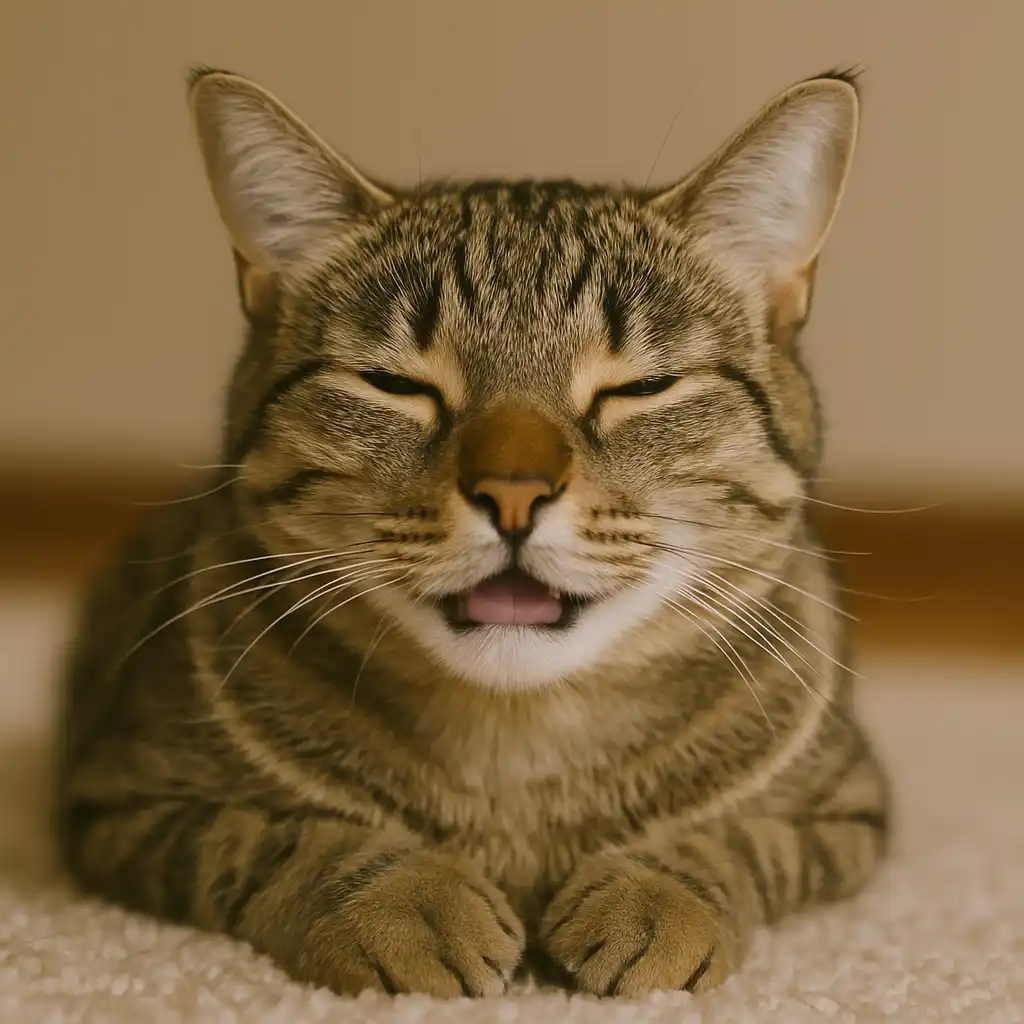Introduction: The Gentle Rumble of Feline Comfort
Anyone who has lived with a cat knows the comforting rhythm of their purring. Whether curled up on your lap after a long day or stretched out in the sunlight, cats use this soothing vibration in ways that fascinate scientists and pet lovers alike. But why do cats purr?
Having worked closely with pet owners across the UAE, I’ve witnessed firsthand how purring often reassures people that their cats are relaxed, happy, and safe. For instance, during routine checkups, even anxious cats often start purring the moment they feel gentle handling, highlighting the connection between feline emotions and this unique sound.
Right after this introduction, it’s worth noting how closely linked emotional well-being and care are to grooming and environment. Many pet owners seeking pet grooming Abu Dhabi services also report changes in their cat’s behavior, including the frequency of purring, after their pet feels clean and stress-free.
The Science Behind Why Cats Purr
Purring is more than just a “happy sound.” Research shows that the mechanism originates from repetitive neural oscillations in a cat’s brain. These signals cause muscles within the larynx (voice box) to twitch, leading to vibrations as the cat breathes in and out. The frequency usually falls between 25 to 150 Hertz, a range known to promote healing in both cats and humans.
Self-Healing Frequencies
Studies indicate that cats may purr not only when content but also to heal themselves. Vibrations in the 25–50 Hz range are linked to tissue regeneration, bone healing, and pain relief. This explains why some cats purr when injured or stressed—nature’s way of aiding recovery.
Emotional Communication
Purring also communicates emotions. Cats purr to bond with kittens, signal affection to humans, and sometimes even request food. Researchers have identified a “solicitation purr,” which is subtly different from a standard purr. It often includes higher-pitched elements that humans interpret as urgent, leading many owners to respond quickly with food or attention.
When Cats Purr: Beyond Happiness
Cats don’t purr only when they’re happy. Their sounds carry different meanings depending on the situation:
- Contentment: A gentle rumble when lying next to their favorite human.
- Communication with kittens: Mother cats use purring to reassure their kittens.
- Healing: Injured or unwell cats often purr to self-soothe.
- Stress and anxiety relief: Cats sometimes purr during vet visits or car rides as a coping mechanism.
Real-world example: I once observed a cat recovering from surgery at a veterinary clinic in Abu Dhabi. Though clearly uncomfortable, it purred while resting, likely using vibrations to calm itself and promote healing.
Amazing Facts About Cats and Their Purrs
The world of feline purring is filled with surprising discoveries. Here are some amazing facts about cats that highlight the uniqueness of this behavior:
- Not all cats purr the same way. Some have louder, more distinct rumbles, while others are barely audible.
- Big cats differ. While domestic cats purr, lions and tigers generally roar instead. However, cheetahs and cougars can purr continuously.
- Cats may purr to influence humans. Research suggests purring triggers nurturing responses in people, strengthening the human-cat bond.
- Purring benefits humans too. Exposure to cat purrs may help reduce stress, lower blood pressure, and even support emotional well-being.
How Purring Affects Cat Owners in the UAE
Living in the UAE, where fast-paced lifestyles are the norm, cat owners often describe purring as their daily therapy. After a long workday in Abu Dhabi or Dubai, the sound of a purring cat can instantly reduce stress and foster calmness at home.
Veterinary clinics across the UAE also highlight that purring may assist in emotional bonding between families and their pets, making cats ideal companions for both singles and households.
Practical Tips: Encouraging Healthy Purring
To help your cat feel safe, healthy, and more likely to purr naturally, consider these expert tips:
1. Provide a Stress-Free Environment
Keep your home calm and predictable. Cats thrive on routine, so feeding, playing, and grooming them at consistent times helps reduce anxiety.
2. Invest in Proper Grooming
A clean, well-groomed cat feels healthier and more comfortable. Grooming services are increasingly popular across the UAE, where hot weather often causes discomfort in pets. Brushing your cat regularly prevents matting, reduces shedding, and creates bonding moments that may trigger more purring.
3. Respect Their Boundaries
Some cats purr more when left to approach humans on their own terms. Respecting personal space encourages trust and a stronger emotional connection.
4. Regular Veterinary Checkups
Since cats sometimes purr even when in pain, don’t assume all purring equals happiness. Schedule regular health checks to ensure their well-being.
Case Study: Purring as Emotional Support
A UAE-based family adopted a rescued Persian cat that had faced early neglect. Initially shy and withdrawn, the cat rarely purred. After consistent grooming, gentle handling, and a peaceful environment, the family noticed a dramatic change. The cat began purring daily, especially during cuddle times. This highlights how patience and care can unlock the emotional side of a feline.
When to Be Concerned About Purring
While purring is often positive, certain red flags require attention:
- Excessive purring with signs of distress such as hiding, loss of appetite, or limping.
- Purring combined with heavy breathing may indicate respiratory issues.
- Changes in behavior like sudden aggression, withdrawal, or refusal to play.
If you notice such symptoms, seek veterinary care immediately. Cats are experts at masking pain, and purring may sometimes disguise serious health conditions.
Conclusion: The Emotional Symphony of Cats
So, why do cats purr? The answer is layered: it’s a sign of joy, a tool for healing, a way to communicate, and sometimes even a method to cope with stress. For cat owners in the UAE, purring is not just an endearing sound—it’s a glimpse into the emotional world of their beloved pets.
By understanding the science and emotions behind feline purring, owners can build deeper bonds and ensure their cats live healthier, happier lives. Whether through proper nutrition, regular vet visits, or professional grooming, every step enhances the well-being of these remarkable companions.
To end, remember that grooming is just as vital as cuddles. Many owners seeking cat grooming Abu Dhabi services discover their pets purring more often once they feel fresh, relaxed, and cared for. Truly, purring is the universal language of feline trust and love.

